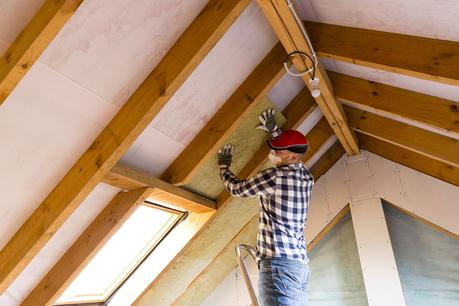
6 minutes read
The UK is in a race against time to make its homes more eco-friendly. In 2020, total household emissions fell to 133 million tonnes of CO2 equivalent (CO2e), compared to 148 million tonnes of CO2 in 2019 (ONS, 2021) - but much more still needs to be done.
That's why the government is bringing in the Future Homes Standard, which will ensure that all new homes built from 2025 will produce 75-80% fewer carbon emissions than current properties.
Although the Future Homes Standard is a work in progress - and has been since 2019 - we should start to see some changes brought in next year. Want to learn more? Check out our helpful guide below.
What's on this page?
What is the Future Homes Standard?
The Future Homes Standard is an ongoing project, which involves the government collaborating with experts in different industries to create a new set of environmental building standards.
Although the plans are currently in 'phase one', it's already been established that the new set of regulations will make sure all newbuilds will emit 75-80% fewer carbon emissions than homes under current rules.
On top of this, the Future Homes Standard - which is set to come into place in 2025 - is aiming to:
- Ensure all UK homes are 'fit for the future' - Meaning they'll be better for the environment and more affordable for people to heat. 'Future-proofed' homes are expected to produce 31% fewer CO2 emissions compared to current standards
- Introduce 'zero-carbon-ready homes' - This essentially means homes will release fewer emissions over time, without the need for more pricey retrofitting work, as the electricity grid becomes greener
- Avoid having homes rely on fossil-fuel heating - Currently, the main plan for this in the report is to make homes compatible with heat pumps, rather than gas boilers
- Introduce a 'fabric-first approach' - This involves maximising the performance of the materials that make up the building itself, consequently improving insulation and airtightness
When will it come into effect?
The Future Homes Standard was first announced back in 2019, and won't be finalised until 2025.
Although there have been two consultations so far, which have looked into how the standards should be delivered, the full details are yet to be mapped out.
The Future Homes Standard is split into four different phases, which we've outlined below.
- Phase one: Introduce interim 2021 Part L (this focuses on conservation of fuel and power) - complete by 2022
- Phase two: Technical work and engagement - complete by 2022-2024
- Phase three: Consultation and policy development - complete by 2023
- Phase four: Implementation - complete by 2025
Why has the Future Homes Standard been created?
The UK needs to rapidly reduce the amount of greenhouse gasses it releases into the atmosphere - and household emissions is an excellent place to start.
The Climate Change Committee has estimated that energy use in homes accounts for about 14% of UK greenhouse gas emissions. In fact, each year, home energy accounts for roughly 133 million tonnes of CO2e - that's double Austria's total annual emissions.
By addressing the environmental issues in our homes, the Future Homes Standard will hopefully bring these emissions down, which will help us massively in the fight against climate change.
The general public will also benefit from these alterations - not only will we all be warmer during the winter, but we'll be paying less for our energy bills. It's a win-win!
Is the Future Homes Standard good enough?
The overall consensus from experts in the field is that the standards aren't good enough.
Don't get us wrong, the Future Homes Standard is a step in the right direction, but there's definitely room for improvement.
In February 2021, Royal Institute of British Architects (RIBA) President, Professor Alan M Jones, said: "The proposed changes to building regulations are simply not ambitious enough to meet the scale of our environmental challenge."
This is also reflected in the government's phase one consultation, which included a survey of 3,310 people from different sectors.
When asked whether the government's goal of having newbuilds produce 75-80% fewer emissions than current buildings was good enough, 80% of people said the reduction was too low.
Instead of reducing emissions, many of the respondents suggested that the Future Homes Standard should make sure all new homes are designed to be net zero. This would provide a more urgent response to climate change.
On top of this, when respondents were asked whether they agreed with the proposed timings of the Future Homes Standard roadmap, 84% of people said the timings are not ambitious enough.
Most respondents argued that the proposed roadmap to 2025 needs to speed up rapidly if we want to meet the net-zero target by 2050.
Another noticeable problem is that the Future Homes Standard is relying on grid decarbonisation to reduce emissions. Feedback from experts suggested that new buildings should be designed to reduce the burden on the National Grid - this would also help the grid decarbonise faster.
Examples of the Future Homes Standard in action
Since the Future Homes Standard is still only in phase one, specifics aren't set in stone. However, the government's report shows a lot of interest in some key areas, including:
- Removing fossil fuels - This is likely to include installing appliances like heat pumps, introducing hydrogen-fueled energy, and encouraging more renewable energy in the grid
- Increasing energy efficiency - The report suggests key areas that could benefit from energy-efficiency improvements include boilers, heat pumps, cooling appliances, and lighting
- Improving home ventilation - The government suggests that it will "proceed with the use of performance-based ventilation standards"
- Upgrading building airtightness - This essentially means there will be more of a focus on removing all gaps and cracks on buildings, which will help keep them well insulated
- Improving fabrics and materials - This will include considering alternative building methods to the more traditional construction
- Having heating systems run at lower temperatures - This will enable heat pumps to work more effectively
Summary
There's no denying it - Britain is in dire need of home improvements and new building regulations. But unfortunately, we'll be waiting roughly four years to see significant action.
But fear not - we'll be here to update you with all the key information you'll need to know along the way, as more details are released about the Future Homes Standard.

Beth Howell Writer @Bethany_Howell_
